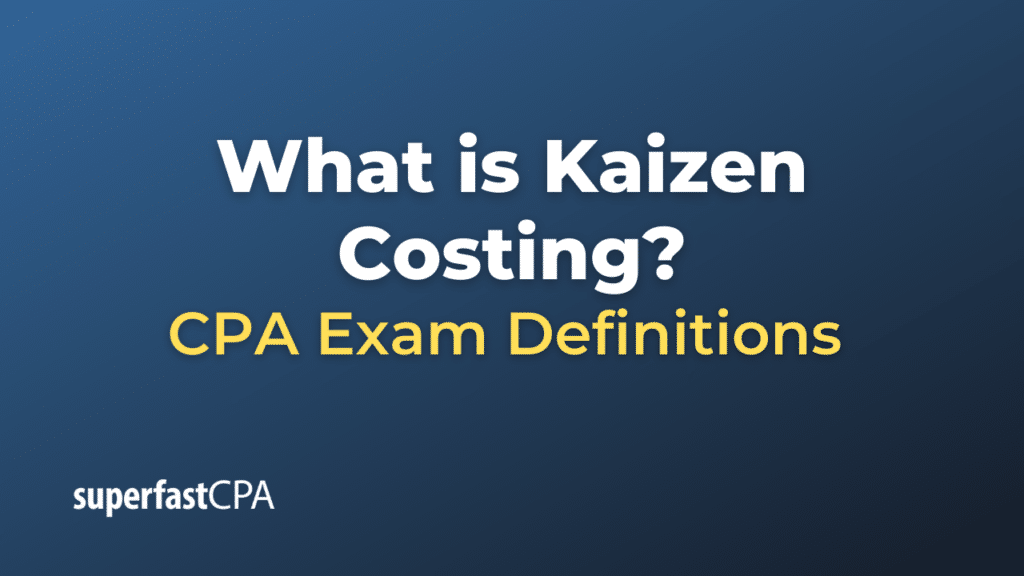Kaizen Costing
Kaizen costing is a cost-reduction system based on the kaizen philosophy of continuous improvement. Unlike traditional costing methods that focus on reducing costs during the planning and design stages, kaizen costing emphasizes cost reduction during the manufacturing or production stage of a product.
The primary goal of kaizen costing is to challenge existing cost standards and continually strive for lower costs through the elimination of waste and improvement in efficiency. This involves everyone in the organization, from management to assembly line workers, and focuses on small, ongoing, incremental improvements rather than one-time major cost reductions.
Kaizen costing operates under the following principles:
- Involvement of All Employees: Employees at all levels of the organization are encouraged to suggest ways of reducing costs.
- Continuous Improvement: Rather than making one-time major changes, kaizen costing focuses on continuous small changes that, over time, lead to significant improvements.
- Elimination of Waste: The focus is on identifying and eliminating waste in all forms, such as defects, overproduction, waiting time, unnecessary transportation, excess inventory, unnecessary motion, and unused employee creativity.
- Cost Reduction Targets: Management sets specific cost reduction targets for each period, and these targets are pursued relentlessly.
By applying kaizen costing, companies can reduce manufacturing costs, increase profitability, and improve the overall competitiveness of their products. However, it requires a strong commitment to continuous improvement and a culture that encourages and rewards employee involvement and innovation.
Example of Kaizen Costing
Let’s consider a fictional example to illustrate how Kaizen costing might work in a company that produces smartphones.
- Involvement of All Employees: The management of the company informs all the employees, from the assembly line workers to the senior executives, about their plan to implement Kaizen costing. They encourage everyone to suggest ideas on how the company can reduce its production costs.
- Idea Generation: An assembly line worker suggests that if a particular part of the smartphone is redesigned, it could be installed faster, reducing assembly time. Another employee suggests switching to a different supplier for a certain component to get the same quality at a lower price. Yet another employee suggests a change in the manufacturing process that could reduce energy consumption.
- Implementation: After evaluating these suggestions, the management decides to implement them. They redesign the part for faster installation, switch to the cheaper supplier for the component, and make the suggested change in the manufacturing process.
- Cost Reduction Targets and Monitoring: The management sets specific cost reduction targets based on these changes and monitors the results. They find that these changes have led to a significant reduction in the cost of producing each smartphone.
- Continuous Improvement: The process doesn’t stop here. The management continuously encourages employees to come up with more ideas for cost reduction, and this process of incremental improvements continues.
Over time, these small, continuous improvements result in significant cost savings for the company, making it more competitive in the marketplace. This is the essence of Kaizen costing: the continuous pursuit of cost reductions in the production process through the involvement of all employees and the elimination of waste.












